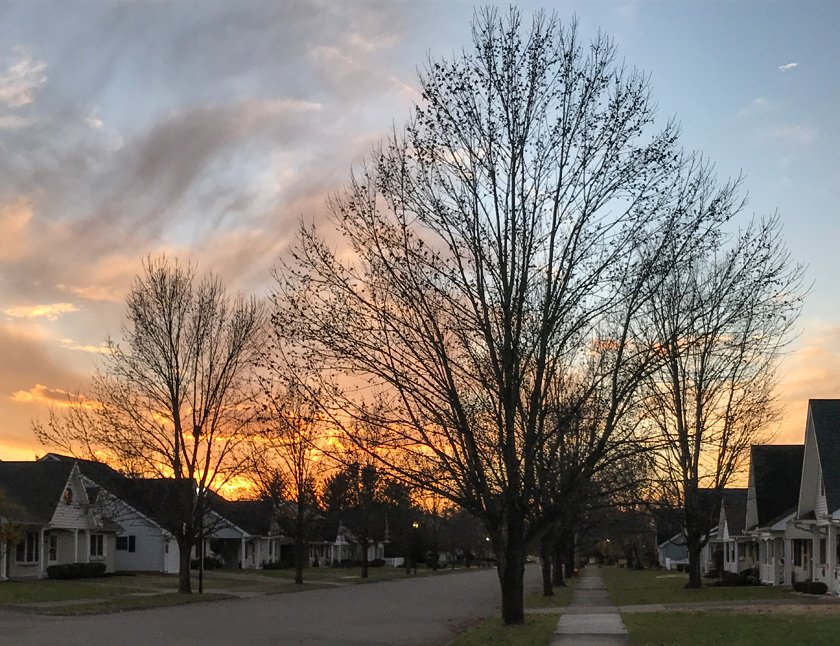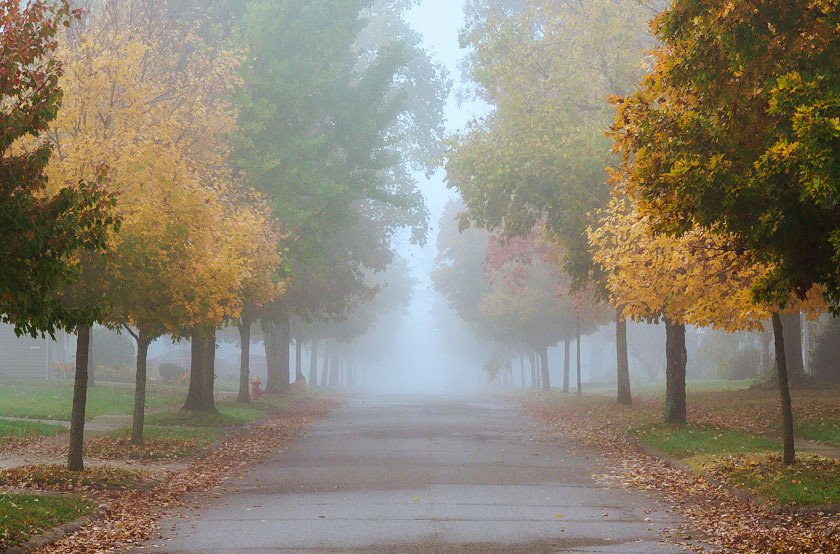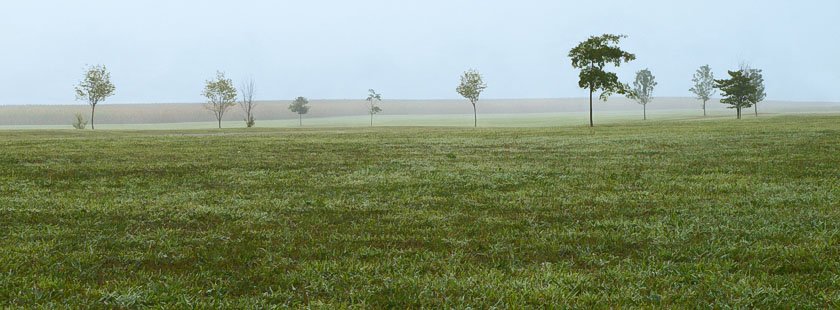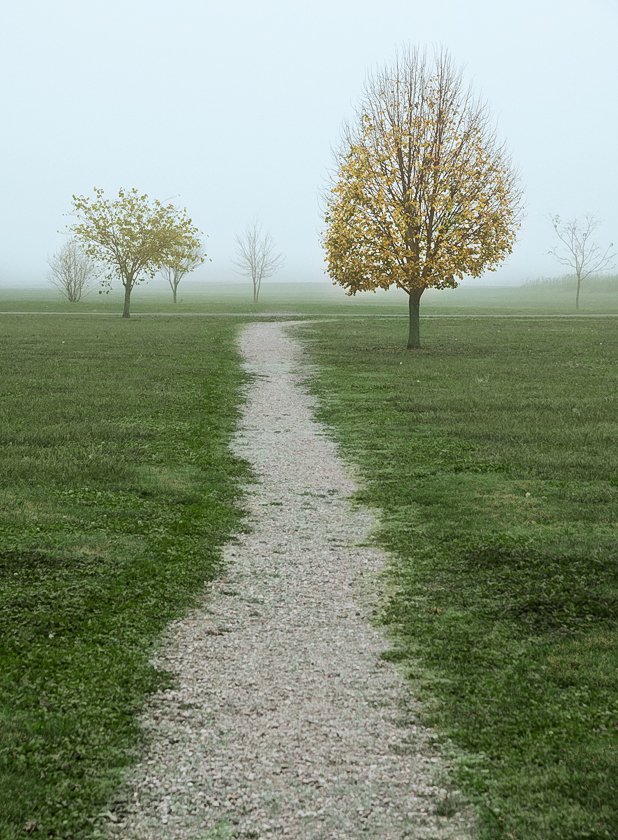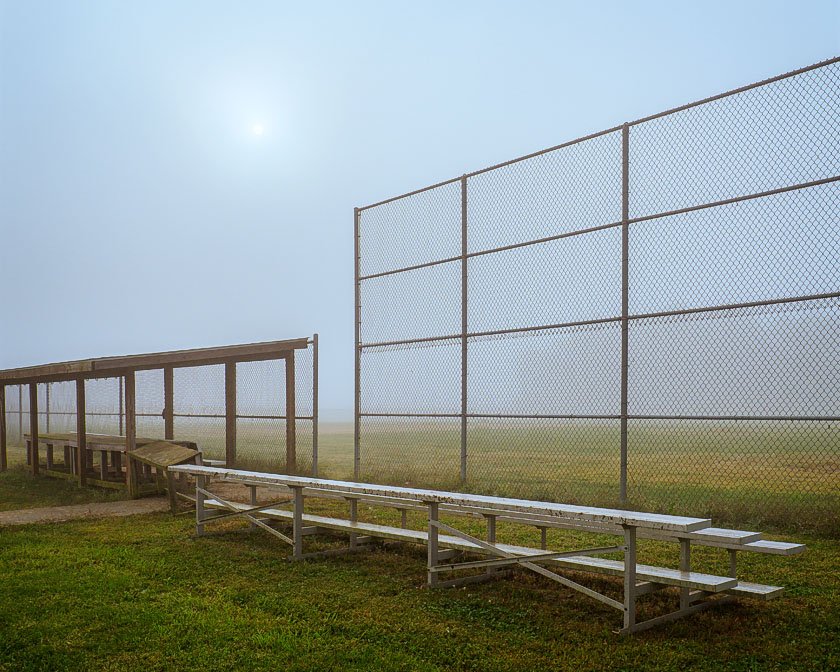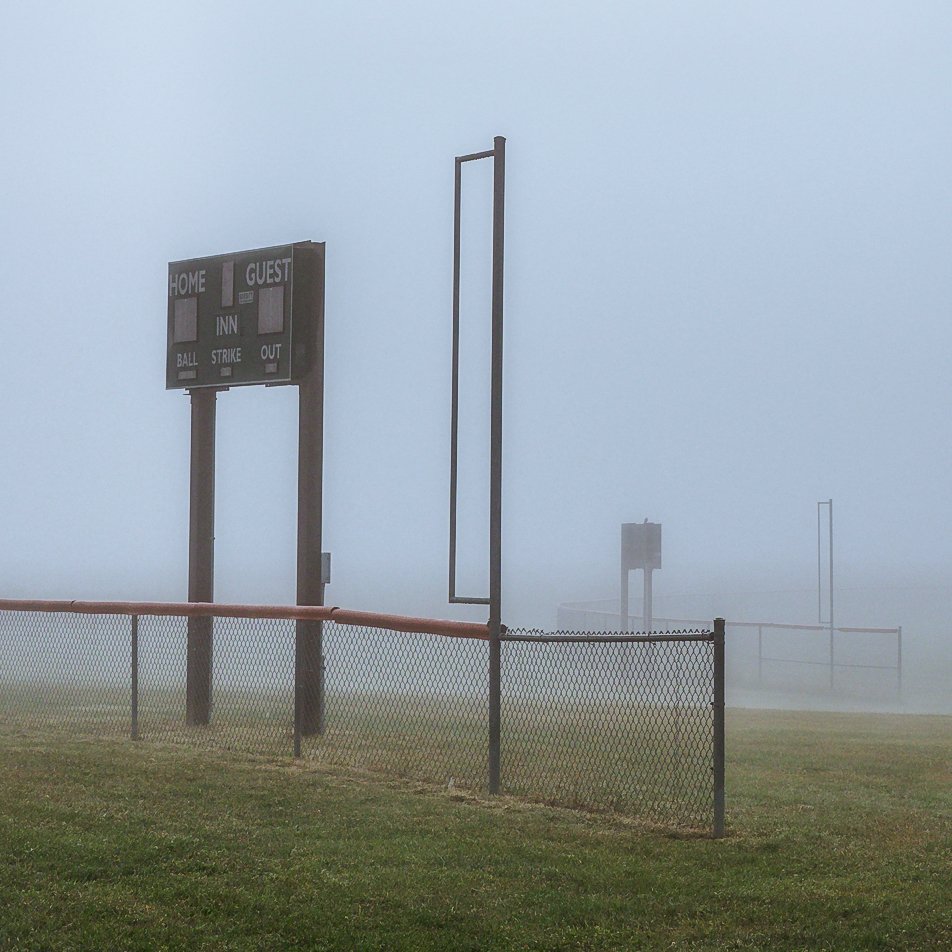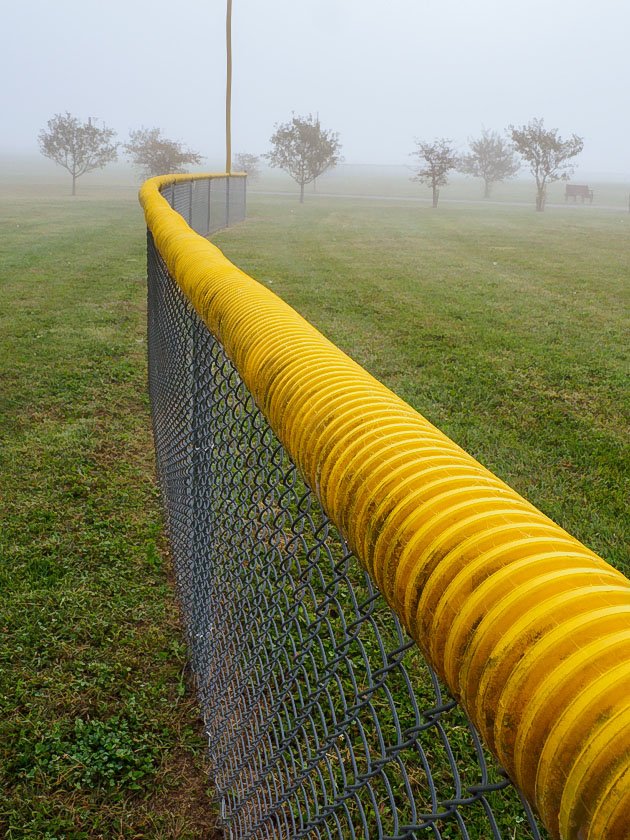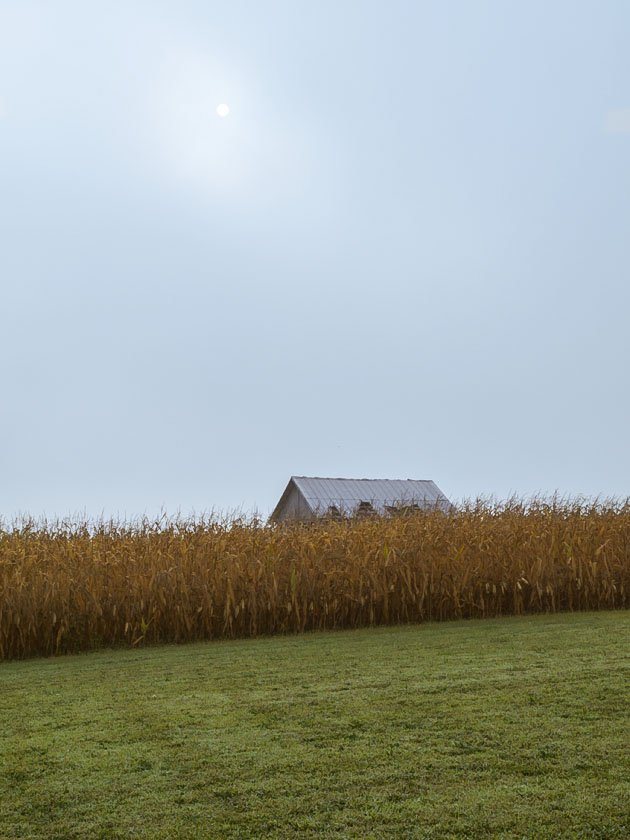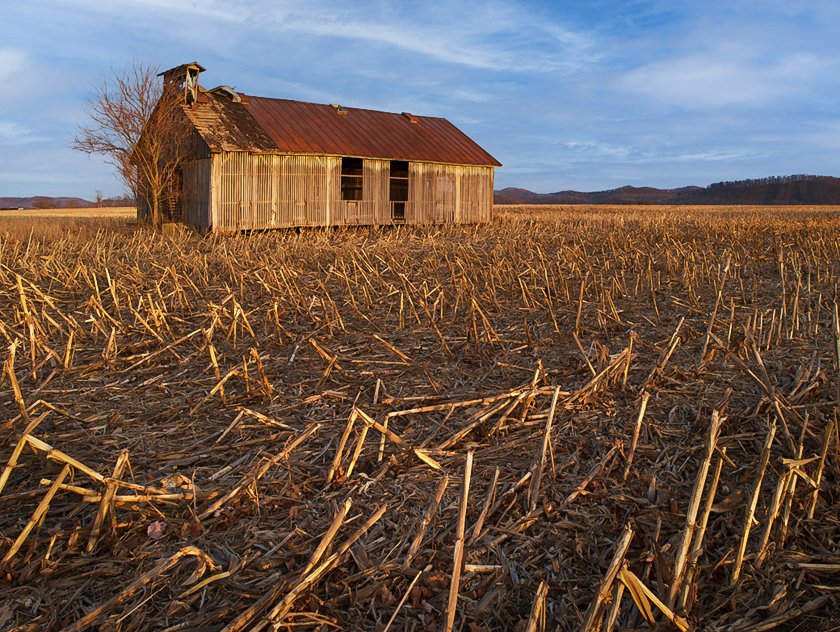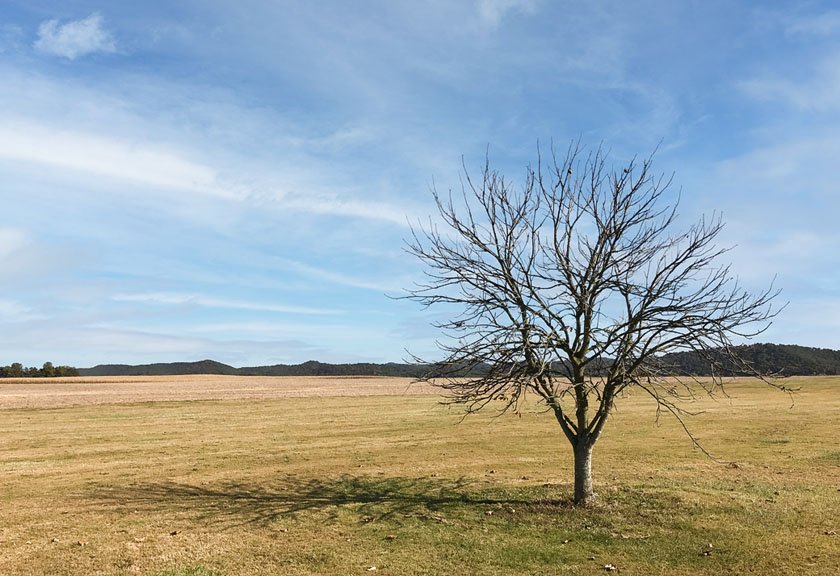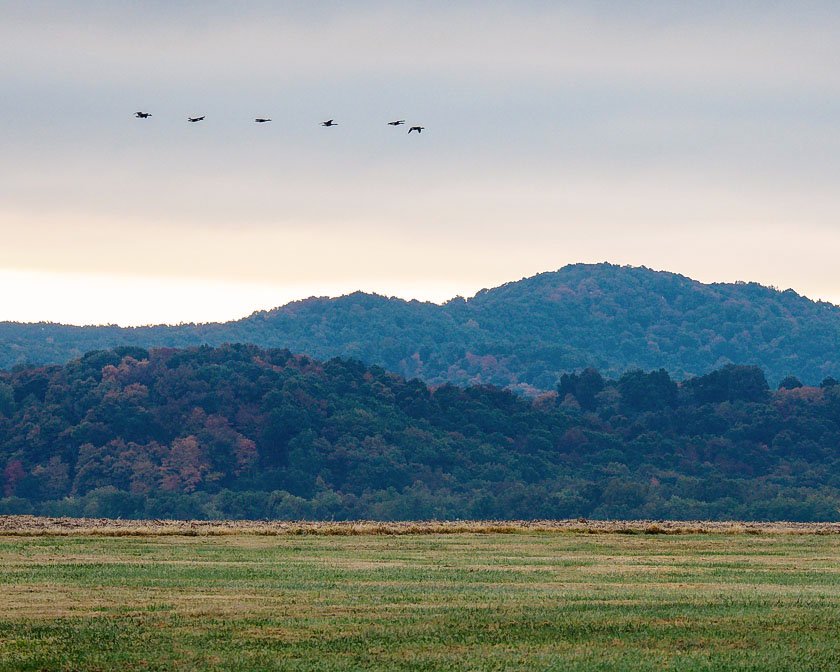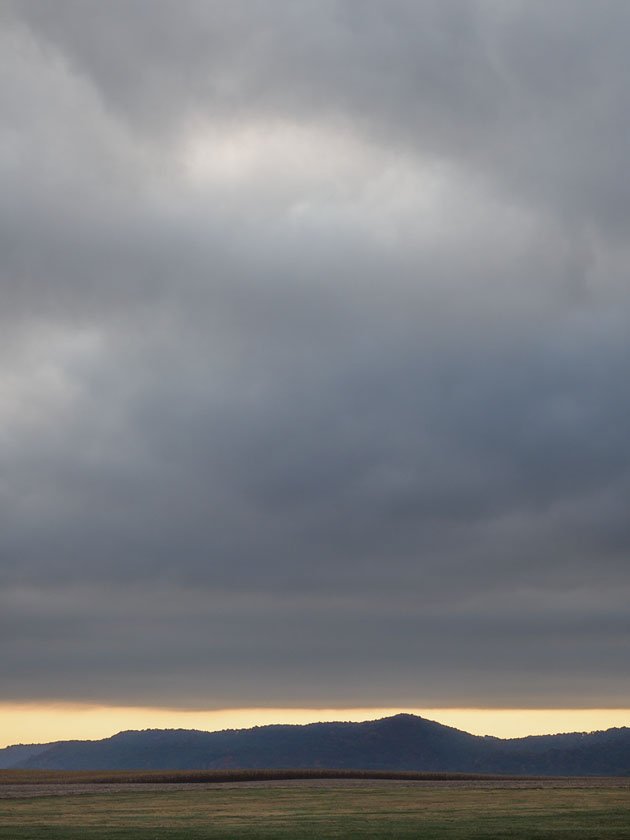There's a town in southern Ohio, almost 200 years old, to which family visits have brought me for the last quarter-century. On the edge of town is a "newer" development built in the 1950s, and at the development's edge, of even more recent vintage, lies a park with open land and athletic fields. Just beyond the park, farmland begins, and in the distance, the ripplings of Appalachia.
The transitions from space to space, use to use, take place with few or no fences. You can walk from many backyards into the park uninterrupted. On the opposite side, you'll know where the park ends only because you face a wall of corn in summer, or, in autumn, flattened rows of dried stalks. In the wide acres of park not devoted to athletics, trees were planted in the mid-aughts, but they seem in no hurry to become anything like a woods. Similarly, an old barn in the corn fields is decaying, but ever so slowly.
The park is a short walk from where I visit, no vehicles needed, and so I've spent many a spare hour there -- in the muffling ground fog of early mornings, or the breeze and birdsong of late day. These images come from fourteen years of such walks, quiet rambling transitions from street to park to farmland.
